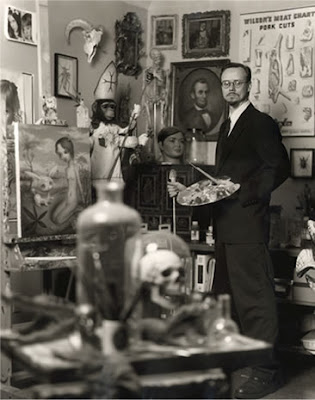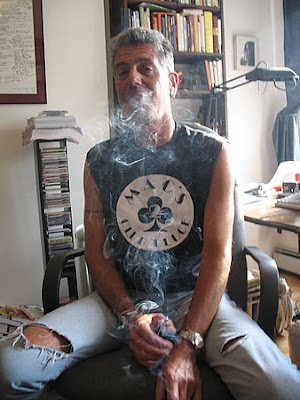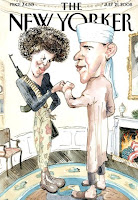If you're too young or too old, you really can't appreciate the game-changing power of a little indie film called "Easy Rider." Now it seems dated, just more hippie baggage for the baby boomer time capsule, but at the time this film radically changed everything--including the film industry. At the time, Hollywood was a dying dinosaur whose bloated corpse (think "Cleopatra," the most expensive bomb of all time) was no longer attracting an audience, but outside--in the streets--weird new forms of experimentation were gripping the Arts--a counter-culture was making itself known in hip new music, fashion, painting, and cinema--especially the films coming over from Europe by Goddard and Fellini--films that were often grainy and rough-hewn, but personal, tossing convention on its head.
The tired old tropes weren't working, the studio system was collapsing, and here at home a perceptive new bunch of artists--mad about film--were aiming peashooters across the boughs of Hollywood's sinking battleships. Timing was everything. "Easy Rider" came along and shocked everyone with a tale of longhaired hippie bikers hitting the road on choppers and getting blown-up by shotgun-wielding rednecks in the Deep South. More important, in the history of cinema, is that a low-budget, rough-edged flick--not that dissimilar from the rash of Roger Corman biker exploitation flicks such as "Wild Angels" (which also starred Peter Fonda)--could make a lot of money. Cheap to make, and raking in the dough, it became a symbol of something new and all the fat cat, cigar-chomping moguls rushed to replicate it.

This pivotal moment in American cinema is delineated in Peter Biskind's "Easy Riders, Raging Bulls: How the Sex-Drugs-and-Rock 'N' Roll Generation Saved Hollywood," and more recently in "Pictures at a Revolution: Five Movies and the Birth of the New Hollywood" by Mark Harris)," two excellent studies of the era.
To us longhaired kids, it was personal. We had never seen a movie with a soundtrack playing cool songs and not some schlocky score (mind you, this was long before "Mean Streets" and "American Graffiti" garnered attention for doing the same thing--and long before pop songs became a mainstay of movies and advertising ). "Easy Rider" gave us a shock of recognition. We were delighted to see hippies up on the screen (as opposed to hippie stereotypes quite common on "Dragnet" and other square mainstream entertainment) smoking dope, philosophizing, dodging rednecks (as we longhairs had become good at) and riding cool choppers (customized Harleys with Panhead engines on hardtail frames--one replete with an audacious American flag paintjob, shocking in it's day). They were not Good Guys in White Hats--in fact, their whole road adventure begins when they sell drugs in the first scene (something that convinced my parent's friends they were bad and deserved to die...Why glorify these scroungy dope pushers?).

Nearly everything about the little film has become commonplace now, so it's hard to imagine the impact. Nowadays, every film has a pop soundtrack and TV commercials are jam-packed with jumpcuts and flashbacks and flash-forwards, and every subculture is represented onscreen as a marketing ploy. Now it's hard to imagine how weird and cool "Easy Rider" seemed, and how unusual--to see these stoned-out, irreverent freaks in stinky biker leathers and American flags sauntering through America--"looking for America"--at the height of America's gung-ho patriotic commie-killing frenzy in Vietnam, a time when America was square as a box of Apple Jacks and the war-supporting hawks made present-day teabaggers look downright civilized. You could get shot wearing longhair in some of those rural towns back then, or at the very least beat-up and subjected to an impromptu haircut by scissor-happy cops and cowboys. John Wayne was alive and well, and not in some revisionist arty appraisal of "The Searchers," but in the hard-charging Green Beret action figure with a string of VC ears around his neck and a camouflaged cameo of Richard Nixon in his heart.
So, picture yourself in that country. You go see some biker movie hoping for action and it has a cool rock soundtrack and you hope these hippies win--but you got a nice reality sandwich instead. Blam-o. My friend Shane Riley saw the movie in a theater in Blackfoot, Idaho, and when the longhairs finally got shot in the last reel the rednecks cheered. That was America back then, not some simpering emo-core, iPod-slinging, Pinot-drinking, sensitive acceptance of all-things while wearing stylish glasses and skinny jeans world. No-siree. Back then America was rough and rusty and stank of machine oil.

"Easy Rider" was directed by Dennis Hopper, who died yesterday after a battle with cancer. Hopper also played Billy, a scruffy longhair with a droopy mustache, sidekick to Wyatt, otherwise known as Captain America for his Old Glory bike and leathers, played by Peter Fonda, and a drunken civil rights lawyer they meet in jail, George, played by Jack Nicholson. Together, they rode their bikes looking for the American Dream--all that corny shit that really hit a nerve back in 1969.
As people pay their tributes to Dennis Hopper this week, this old biker film comes to mind. You may remember Hopper for his brilliant, chilling turn as Frank in "Blue Velvet," or as the zonked-out photographer in "Apocalypse Now," or as a jumpy juvenile delinquent in "Rebel Without a Cause" with James Dean, but I think first of Billy, a drifter with a chopper instead of a horse, a long rider who can't be fenced in. It's all about freedom, man.
In the following scene, the theme is played out in a stoned conversation between George (played by Jack Nicholson) and Billy (played by Hopper).
Billy: Huh. Man, everybody got chicken, that's what happened, man. Hey, we can't even get into like, uh, second-rate hotel, I mean, a second-rate motel. You dig? They think we're gonna cut their throat or something, man. They're scared, man.
George: Oh, they're not scared of you. They're scared of what you represent to 'em.
Billy: Hey man. All we represent to them, man, is somebody needs a haircut.
George: Oh no. What you represent to them is freedom.
Billy: What the hell's wrong with freedom, man? That's what it's all about.
George: Oh yeah, that's right, that's what it's all about, all right. But talkin' about it and bein' it - that's two different things. I mean, it's real hard to be free when you are bought and sold in the marketplace. 'Course, don't ever tell anybody that they're not free 'cause then they're gonna get real busy killin' and maimin' to prove to you that they are. Oh yeah, they're gonna talk to you, and talk to you, and talk to you about individual freedom, but they see a free individual, it's gonna scare 'em.
Billy: Mmmm, well, that don't make 'em runnin' scared.
George: No, it makes 'em dangerous.
 So long, Dennis Hopper (1936-2010)
So long, Dennis Hopper (1936-2010)





















